new posts in all blogs
Viewing: Blog Posts Tagged with: Read Alouds, Most Recent at Top [Help]
Results 1 - 20 of 20
How to use this Page
You are viewing the most recent posts tagged with the words: Read Alouds in the JacketFlap blog reader. What is a tag? Think of a tag as a keyword or category label. Tags can both help you find posts on JacketFlap.com as well as provide an easy way for you to "remember" and classify posts for later recall. Try adding a tag yourself by clicking "Add a tag" below a post's header. Scroll down through the list of Recent Posts in the left column and click on a post title that sounds interesting. You can view all posts from a specific blog by clicking the Blog name in the right column, or you can click a 'More Posts from this Blog' link in any individual post.
Whether students have a year or more under their belts or are starting school for the first time, a new school year can invoke everything from laughter to tears to giggles and cheers. Teachers face the full spectrum of student feelings about the first day of a new school year: excitement, shyness, doubt, fear, anxiety.
How can we help our students face their feelings and the start of the new school year?
Selecting the right back-to-school read aloud is exciting because of the potential it holds. We can imagine the conversations we will have with our scholars and the connections they will make. We can imagine the safe, welcoming, reading-first space we will inspire.
 It may be tempting to concentrate on introducing students to routines and expectations and practicing procedures around sitting on the carpet or signaling for the bathroom. However, building classroom culture is critical to a successful school year. Reading should start on day 1 as part of your strategy for achieving that safe, welcoming, reading-first space.
It may be tempting to concentrate on introducing students to routines and expectations and practicing procedures around sitting on the carpet or signaling for the bathroom. However, building classroom culture is critical to a successful school year. Reading should start on day 1 as part of your strategy for achieving that safe, welcoming, reading-first space.
As you assemble or sort through your read aloud bin for the right mentor texts for the first unit in your scope & sequence, think about which books signal the community and classroom culture you want and your students need.
Pair read alouds that are “elementary school classics” with books that celebrate and recognize your students’ experiences, backgrounds, and interests.
For example, a classic back to school read aloud is Chrysanthemum, by Kevin Henkes, about a young girl’s first day of kindergarten. Henkes captures the feelings of many new students navigating new spaces and friendships.
Now pair that with a text that has characters with identities and experiences that are meaningful to your student population. Yes, first day jitters and excitement are universal, but the additional challenge of being a non-native English speaker or coping with homelessness can tip feelings over from nervous to overwhelmed.
Chrysanthemum, You’re Not Alone!
As part of your preparations for the beginning of the school year, gather a collection of your books related to the first day of school.
Book Pairing Recommendation:
Elizabeti’s School + Moony Luna/ Luna, Lunita Lunera + Chrysanthemum (HarperCollins)
Ideal read-alouds for the start of school should:
- Allow you to introduce and discuss the roles of students and teachers, the classroom, and school in general
- Show young learners that it is normal to have a mixture of feelings during this time of change
- Include a variety of themes and topics: the first day of school, making friends, families and communities, dealing with new situations and separation, helping each other process our emotions/overcome fears, and growing up
Getting students to start talking about how a character grapples with new classmates and the school setting can help them express how they are feeling as well as recognize that others in the room feel exactly the same way. (It also gives you the opportunity to start reading to kids! And show how book-centric your classroom is.)
Activities:
- In the first few days, read more than one character’s first day of school. Ask children to make connections between these stories. Also encourage them to connect their own school experiences to those of characters in the books.
- If students are writing, have children write about something in school that made them feel happy. It may be one or two sentences. For students who are not writing yet, encourage them to dictate their experience for their drawings to an adult who will record their words. Include a space for students to sketch their answer.
- Have students turn to the last page in the book. Then ask them to draw a dream that the character might have that night or imagine what her second day will be like.
- As a whole group, write a class letter as Chrysanthemum to Moony Luna. What advice would she have for Luna about school?
- Finally, create a bin of other back-to-school books (it’s quite a genre!) for students to explore in and outside of class.
Additionally, consider reading your favorite must-read back-to-school book in the students’ first language (or inviting a parent to join alongside you in the reading) if they are English Language Learners. Many of the most popular “classics” are available in other languages as well as authentic literature written as bilingual texts.
Recognizing children’s cultures and their languages is a BIG deal. Too many schools get students’ names wrong from the beginning. More and more schools have English Language Learner populations and multiple languages spoken within one school and classroom. Reading in students’ language or selecting a text that portrays a character your students identify with communicates to them that they matter, their lives matter, and they are going to learn a ton with you this year.
Culturally responsive books with characters and themes about navigating a new school/grade/year:
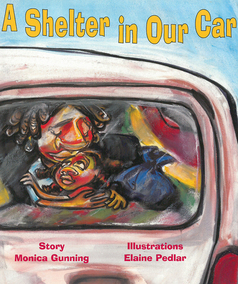 A Shelter in Our Car: Zettie and her Mama left their warm and comfortable home in Jamaica for an uncertain life in the United Sates, and they are forced to live in Mama’s car.
A Shelter in Our Car: Zettie and her Mama left their warm and comfortable home in Jamaica for an uncertain life in the United Sates, and they are forced to live in Mama’s car.
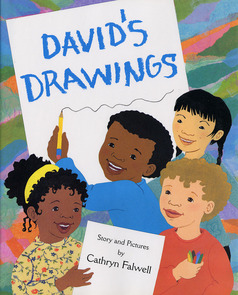 David’s Drawings and Los dibujos de David: Available in Spanish and English, a shy young African American boy makes friends in school by letting his classmates help with his drawing of a bare winter tree. A shy young African American boy makes friends in school by letting his classmates help with his drawing of a bare winter tree.
David’s Drawings and Los dibujos de David: Available in Spanish and English, a shy young African American boy makes friends in school by letting his classmates help with his drawing of a bare winter tree. A shy young African American boy makes friends in school by letting his classmates help with his drawing of a bare winter tree.
 Elizabeti’s School and La escuela de Elizabeti: In this contempory Tanzanian story available in English and Spanish, author Stephanie StuveBodeen and artist Christy Hale once again bring the sweet innocence of Elizabeti to life. Readers are sure to recognize this young child’s emotions as she copes with her first day of school and discovers the wonder and joy of learning.
Elizabeti’s School and La escuela de Elizabeti: In this contempory Tanzanian story available in English and Spanish, author Stephanie StuveBodeen and artist Christy Hale once again bring the sweet innocence of Elizabeti to life. Readers are sure to recognize this young child’s emotions as she copes with her first day of school and discovers the wonder and joy of learning.
 First Day in Grapes and Primer día en las uvas: Available in Spanish and English, the powerful story of a migrant boy who grows in selfconfidence when he uses his math prowess to stand up to the school bullies.
First Day in Grapes and Primer día en las uvas: Available in Spanish and English, the powerful story of a migrant boy who grows in selfconfidence when he uses his math prowess to stand up to the school bullies.
 Home at Last and Al fin en casa: A sympathetic tale available in Spanish and English of a motherdaughter bond and overcoming adversity, brought to life by the vivid illustrations of Felipe Davalos.
Home at Last and Al fin en casa: A sympathetic tale available in Spanish and English of a motherdaughter bond and overcoming adversity, brought to life by the vivid illustrations of Felipe Davalos.
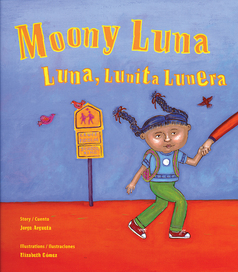 Moony Luna/ Luna, Lunita Lunera: Bilingual English/Spanish. A bilingual tale about a young girl afraid to go to school for the first time.
Moony Luna/ Luna, Lunita Lunera: Bilingual English/Spanish. A bilingual tale about a young girl afraid to go to school for the first time.
 The Closet Ghosts: Moving to a new place is hard enough without finding a bunch of mean, nasty ghosts in your closet. When Hanuman, the Hindu monkey god, answers Anu’s plea for help, Anu rejoicesuntil she realizes that those pesky ghosts don’t seem to be going anywhere.
The Closet Ghosts: Moving to a new place is hard enough without finding a bunch of mean, nasty ghosts in your closet. When Hanuman, the Hindu monkey god, answers Anu’s plea for help, Anu rejoicesuntil she realizes that those pesky ghosts don’t seem to be going anywhere.
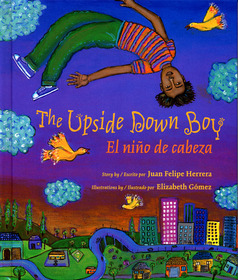 The Upside Down Boy/ El niño de cabeza: Bilingual English/Spanish. Awardwinning poet Juan Felipe Herrera’s engaging memoir of the year his migrant family settled down so that he could go to school for the first time.
The Upside Down Boy/ El niño de cabeza: Bilingual English/Spanish. Awardwinning poet Juan Felipe Herrera’s engaging memoir of the year his migrant family settled down so that he could go to school for the first time.
 Willie Wins: In this heart-warming story, a boy gets beyond peer pressure and comes to appreciate the depth of his father’s love.
Willie Wins: In this heart-warming story, a boy gets beyond peer pressure and comes to appreciate the depth of his father’s love.
For further reading on starting the school year:

By:
jilleisenberg14,
on 3/2/2015
Blog:
The Open Book
(
Login to Add to MyJacketFlap)
JacketFlap tags:
Educator Resources,
CCSS,
Holidays and Celebrations,
music in our schools,
Read Alouds,
Music,
celebrations,
global,
musical instruments,
Add a tag
March is Music in Our Schools Month. In support of music programs, music educators, and wiggling students trying to sneak a beat, we are celebrating (global) Music in Our Schools Month with DRUMS!
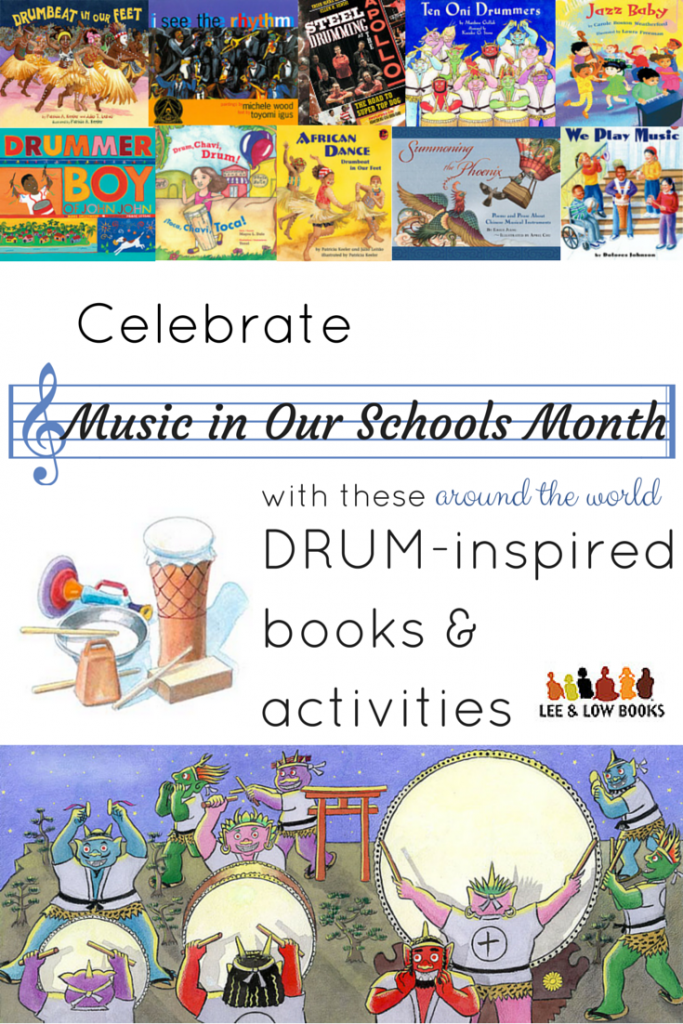 Book recommendations:
Book recommendations:
Questions during reading:
- How can drums help people communicate? What can someone communicate through a drum?
- How do you think the musician(s) in this book wanted their music to make people feel?
- Is the drum a central part of this story or community? Why or why not? How would the story be different if another instrument were used, such as a guitar or flute?
- What words in the text describe how the drum sounds?
- Bring in other images of drums from around the world or compare two or more books featuring drums: What are the features of a drum? What do drums around the world have in common? How are drums unique from other instruments? What materials are best for making drums? What geometric shapes are best for making drums?
Activities:
- If you read more than one book featuring a drum: Post a world map and note which countries drums are found.
- Have students research the particular type of drum featured in the book. What materials are used for this type of drum? What characteristics does this type of drum have and what is special about the design? Is this drum used everyday/casually or for special holidays/significant times? What country or region does it originate? What genre of music is the drum used in today? Who are some famous drummers who use this kind of drum?
- Set up a listening station devoted to music including drums. Provide a range of musical genres. Leave covers available for students to explore. After students have an opportunity to listen to different kinds of music featuring or including drums, encourage students to share their reactions in writing. What images did the music bring to them as they listened with their eyes closed? What did they imagine as they heard the drums?
- Encourage students to make their own drum in class or at home. Students can make their own drums out of coffee cans, cylindrical oatmeal boxes, or plastic deli containers. Supply different materials (plastic wrap, paper, foil, etc.) for covering the opening so students can hear a variety of different sounding drums. Which ones make metallic sounds, loud sounds, soft sounds, sweet sounds, deep sounds? How can you make the sound change?
 For further reading on music and books:
For further reading on music and books:
Book and Activity Suggestions to Match Your Summer Adventure: Outdoor Summer Concerts
 Jill Eisenberg, our Senior Literacy Expert, began her career teaching English as a Foreign Language to second through sixth graders in Yilan, Taiwan as a Fulbright Fellow. She went on to become a literacy teacher for third grade in San Jose, CA as a Teach for America corps member. She is certified in Project Glad instruction to promote English language acquisition and academic achievement. In her column she offers teaching and literacy tips for educators.
Jill Eisenberg, our Senior Literacy Expert, began her career teaching English as a Foreign Language to second through sixth graders in Yilan, Taiwan as a Fulbright Fellow. She went on to become a literacy teacher for third grade in San Jose, CA as a Teach for America corps member. She is certified in Project Glad instruction to promote English language acquisition and academic achievement. In her column she offers teaching and literacy tips for educators.
.jpeg?picon=3220)
By:
Keith Schoch ,
on 3/2/2013
Blog:
Teach with Picture Books
(
Login to Add to MyJacketFlap)
JacketFlap tags:
picture books,
middle school,
mentor texts,
read alouds,
ELA,
trade books,
Common Core,
argumentative reading,
shared readings,
Add a tag
In my workshops, teachers often express the desire to use picture books in their classroom, but wonder how to do it most effectively. The answer to that question depends entirely upon what we want to accomplish.Below I've provided a few thoughts on this topic, as well as some recommendations. 1) Teacher to Class Sharing
This strategy is probably as old as reading itself, and most closely mimics the read-together experiences shared by many children at home with family. The close proximity, the intimacy of this approach, explains why reading picture books online or on a tablet feels so much less satisfying. I would recommend this approach the majority of the time, no matter what the age group. When I read a picture book to my sixth graders, I still ask them to "come join me on the rug."
Before you choose this method, however, you might want to define your purpose. Why this picture book, and why now? Below are some thoughts which might help you clarify or find a purpose for sharing a picture book aloud.
- Picture books activate not only prior knowledge, but also attitudes, beliefs, and misconceptions. Picture books create a bridge between the student’s prior knowledge and newly introduced learning. In a Social Studies lesson, for example, you might read aloud the picture book The Honest to Goodness Truth (see summary and lesson suggestions). After reading, you say, “I thought we all agreed yesterday in our discussion about elections that ‘Honesty is the best policy.’ Yet this book seems to say almost the exact opposite! So who’s right? Is there a time when honesty isn't the best policy?”
- Pictures books construct schema. A teacher wishing to introduce a fantasy genre might share a picture book which exemplifies six traits of that genre. Upon completion of the reading, the teacher asks her students to list the traits they noticed. How best to confirm or disqualify these traits? Have the students read additional fairy tales in small groups or stations (see below). Discovering the critical attributes of any genre could be done in this same way (see ideas on exploring Fables)

- Picture books create common ground. Before reading a novel set in the Depression, you might read aloud or show images from several picture books which deal with that topic. One might be illustrated with photographs and eyewitness reports, one with period art works sponsored by the WPA, and one with illustrations and a narrative by a contemporary author. In just a few minutes time, students would construct a shared set of images, feelings, and understandings on a single topic. Recently, my own students were challenged to address the topic "Is Winning Everything?" in an argumentative essay. In addition to a number of videos and discussions, our principal visited as a guest reader and shared :Let Them Play by Margot Theis Raven and Chris Ellison (see summary). When finished, he asked, "What would these boys have to say about winning? Was that all they wanted?" (See the video prompts at my How to Teach a Novel blog).
- Picture books can make abstract concepts (such as life skills) concrete. As teachers we are often expected to teach “fuzzy” character concepts such as cooperation, responsibility, and integrity. Where are those lessons in our textbooks? Here is where picture books can play a large role. Through picture books, universal themes such as patience, empathy, teamwork, cooperation, forgiveness, fairness, and responsibility are captured in just sixteen or twenty-four pages, creating a memorable model for children who still think and generalize in very concrete terms. An idea such as integrity becomes very real to students through a shared reading and discussion of a book such as Demi's The Empty Pot.
2) Paired Readings
This type of reading usually occurs with a specific outcome in mind. In lower grades, paired readings allow readers to practice fluency and clarity. It also demands that readers are “attentive” at least 50% of the time. However, many students suffer in comprehension when required to read aloud. They are so concerned with the demands of meeting the needs of an audience that they “check out” from comprehending. It’s not uncommon for a student to read aloud an entire paragraph or page, and then have no clue what was read.
Possible solutions? You might provide students with assigned portions and require that they silently read their selections first, seek help with unknown words, and then read aloud only after they've previewed the text in this way. You might also create “checkpoints” for discussion, which require reading pairs to stop and discuss what they've read, and only continue if they've understood the text.
3) Group Readings or Station Readings

In this format, students are grouped in threes or fours, and rotate to various stations. At each station is a single title (perhaps multiple copies of that title), and students read together with a set purpose. One purpose, for example, might be to establish common knowledge about a topic through its presentation in a number of diverse picture books. Students might read from a number of baseball picture books, for example, and then report back to the group on the author's purpose in each. Then, the teacher might read a newer title from that same topic, such as Matt Tavares' Becoming Babe Ruth, and ask students to discuss how this author's purpose may compare and contrast with those of other authors they had experienced. (See the cover image at the top of the post, and see an inside image here).In order to ensure attentiveness to specific ideas from books within a theme, teachers might provide handouts with questions for each title. An essential question might be repeatedly asked of each and every book in the stations to gauge awareness of the "big idea," with a more title-specific question included to assess reading comprehension of each text. I've done this in the past with Holocaust Picture Books such as Irena's Jars of Secrets with great success; key to the success of this experience, however, is having many diverse titles and plenty of copies, since some picture books are much longer than others. Students might also read a number of picture books containing the same print content (The Midnight Ride of Paul Revere) with different visual interpretationsby the various illustrators.
4) Independent Reading
Students read independently for a number of reasons, pleasure being the foremost. But as students mature, they should also read picture books as models for their own writing. This makes perfect sense, as picture books are typically the length of student stories in the upper elementary and middle grades, and the length of writing tasks expected on standardized tests. Sixth grade students such as my own might be seeking creative ways to include opposing viewpoints in their argumentative writing. A book like George Bellows: Painter with a Punch does that masterfully. Students may also read picture books as sources of reference. A student seeking background on the Sioux tribe, for example, might express reluctance to wade through a difficult nonfiction text, encyclopedia entry, or web site meant for more mature readers. This same student, however, could access similar information through three or four picture books whose illustrations would aid in deciphering and extending difficult terms and concepts. Now armed with a general understanding of the topic, he might now be more willing to check out that difficult nonfiction text, encyclopedia entry, or web site which seemed so onerous earlier. When my students were researching predators for their HOWL Museum essays, many chose to use trade books versus the Internet to gather facts and supporting details to prove that their creature was a predator worthy of the Hunters of the Wild Lands Museum (see Peerless Predators at my Animal Attraction post).
5. Independent Choice Reading
This one I can't emphasize enough. Having a library full of enticing titles, attractively displayed, is one of the best methods for getting students to read. And I'm not asking you to break the bank and spend all of your personal money on books! When I started out as a teacher a million years ago, I tried to build my classroom library as quickly as possible through garage sales, thrift shops, and Scholastic Book Club bonus points. But additionally, I would visit my public library and sign out twenty-five to fifty different picture books each week. These rotating titles offered my students plenty of variety and in turn encouraged them to visit the public library as well (our small private school didn't have a library). I continued to do this even when I began teaching at a public school, and in 25 years of teaching, only two books ever went missing. A small price to pay for encouraging the love of reading!
How do you share picture books in your classroom? We'd love to hear from you in the Comments section below.

By:
Jaclyn DeForge,
on 2/11/2013
Blog:
The Open Book
(
Login to Add to MyJacketFlap)
JacketFlap tags:
Resources,
Reading Aloud,
multicultural books,
Read Alouds,
Educators,
independent reading,
reading comprehension,
common core standards,
Curriculum Corner,
guided reading,
appendix b,
common core standards appendix b,
common core standards ela appendix b,
common core standards language arts appendix b,
exemplar texts appendix B,
smiling dogs,
diversity,
Book Lists,
Add a tag
 Jaclyn DeForge, our Resident Literacy Expert, began her career teaching first and second grade in the South Bronx, and went on to become a literacy coach and earn her Masters of Science in Teaching. In her column she offers teaching and literacy tips for educators.
Jaclyn DeForge, our Resident Literacy Expert, began her career teaching first and second grade in the South Bronx, and went on to become a literacy coach and earn her Masters of Science in Teaching. In her column she offers teaching and literacy tips for educators.
Earlier this week, I had the pleasure of meeting with a literacy expert who was SUPER involved with the creation of the Common Core Standards (!!!!!), and she gave me some important feedback about the Appendix B supplement I posted last week. To refresh your memory, what we’ve done is compiled a supplement to Appendix B that includes both contemporary literature and authors/characters of color, and that also meets the criteria (complexity, quality, range) used by the authors of the Common Core. We were lucky enough to have this literacy expert take a look at our supplement, and she gave some great suggestions:
- The texts selected for Read Aloud can be outside the text complexity bands for each grade cluster.
- Texts that are Read Aloud in lower grades can be read as Independent Reading in upper grades.
We’ve incorporated these ideas into our Appendix B supplement. So, without further ado, click here for a PDF of our new and improved multicultural supplement to the Common Core’s Appendix B.
Know who else is excited about the updated Appendix B list? This guy:
Further Reading:
What’s in your classroom? Rethinking Common Core recommended texts
Why Window and Mirror Books are Important for All Readers
Filed under:
Curriculum Corner,
Resources Tagged:
appendix b,
Book Lists,
common core standards,
common core standards appendix b,
common core standards ela appendix b,
common core standards language arts appendix b,
diversity,
Educators,
exemplar texts appendix B,
guided reading,
independent reading,
multicultural books,
Read Alouds,
Reading Aloud,
reading comprehension,
smiling dogs 


By:
Jaclyn DeForge,
on 1/28/2013
Blog:
The Open Book
(
Login to Add to MyJacketFlap)
JacketFlap tags:
Resources,
Read Alouds,
reading comprehension,
Diversity Links,
common core standards,
Curriculum Corner,
guided reading,
appendix b,
classroom libraries,
common core standards appendix b,
common core standards ela appendix b,
common core standards language arts appendix b,
Add a tag
 Jaclyn DeForge, our Resident Literacy Expert, began her career teaching first and second grade in the South Bronx, and went on to become a literacy coach and earn her Masters of Science in Teaching. In her column she offers teaching and literacy tips for educators.
Jaclyn DeForge, our Resident Literacy Expert, began her career teaching first and second grade in the South Bronx, and went on to become a literacy coach and earn her Masters of Science in Teaching. In her column she offers teaching and literacy tips for educators.
When the Common Core Standards were created, the authors included a list of titles in Appendix B that exemplified the level of text complexity (found in Appendix A) and inherent quality for reading materials at each grade level. This list was intended as a comparative tool, as a way for teachers and administrators to measure current libraries against country-wide expectations for rigorous literature and informational text. Since its publication, this list, and the titles included and omitted, have created quite a bit of controversy.
Two things are fairly obvious when considering the texts included in Appendix B:
- Most of the titles were first published ages ago.
- Most of the titles are by white people. Or about white people. It’s a pretty white list.
Two things are also fairly important when constructing a classroom library and when selecting texts for instruction:
- Students should have the opportunity to be exposed to both classic and contemporary literature as well as nonfiction texts.
- All students should have the opportunity to see themselves reflected back, as well as to be exposed to cultures and experiences that may differ from their own, in the literature and nonfiction texts we study.
Education Professor Katie Cunningham discussed diversity in Appendix B here on the blog a few weeks ago in her guest post, “What’s in your classroom library? Rethinking Common Core Recommended Texts.” Adding on to her recommendations, I’ve compiled a supplement to Appendix B that includes both contemporary literature and authors/characters of color, but also meets the criteria (complexity, quality, range) used by the authors of the Common Core. Download it here.
If you’re interested in ordering some or all of these titles to supplement your classroom library, please feel free to drop me an email at [email protected]!
What books would you add to Appendix B?
Further Reading:
What’s in your classroom library? Rethinking Common Core Recommended Texts
What is Close Reading?
Filed under:
Curriculum Corner,
Diversity Links,
Resources Tagged:
appendix b,
classroom libraries,
common core standards,
common core standards appendix b,
common core standards ela appendix b,
common core standards language arts appendix b,
guided reading,
Read Alouds,
reading comprehension 


image from Silly Frilly Grandma Tillie written by Laurie A. Jacobs, illustrated by Anne Jewett
Laurie A. Jacobs, author of Silly Frilly Grandma Tillie, participated in the Project Sunshine Book Club on March 7 at a Manhattan hospital. Laurie channeled the silly playful spirit of Grandma Tillie and did an art project with the children. 25 copies of Silly Frilly Grandma Tillie were donated by Flashlight Press to the young patients.
Project Sunshine is a nonprofit organization bringing programming – recreational, educational, and social service – to over 60,000 children facing medical challenges in 150 major cities across the United States and in five international satellite sites: Canada, China, Israel, Kenya and Puerto Rico. For more information, visit http://www.projectsunshine.org.








 David Parkins, illustrator of That Cat Can’t Stay (one of 10 books on the NY State Charlotte Award Primary list), was interviewed by Ms. Down’s students at Town of Webb School on the NYSRA Youth Book Blog. Here’s what he had to say:
David Parkins, illustrator of That Cat Can’t Stay (one of 10 books on the NY State Charlotte Award Primary list), was interviewed by Ms. Down’s students at Town of Webb School on the NYSRA Youth Book Blog. Here’s what he had to say:

That Cat Can't Stay, written by Thad Krasnesky, illustrated by David Parkins
Did you use pictures of real cats to draw from?
If I have to draw something I don’t know well, I would always gather lots of pictures of the thing so I get it right. It’s easy to do this nowadays with the internet. I didn’t need to research cats, though, because we have kept cats as pets for years. At one stage we had six, but right now we have just three: a big grey one (very like the big grey cat in That Cat Can’t Stay), a black one and a tabby who is quite old (about 19 years, I think) but very sprightly still. I see them all the time, so I sort of know how they look.
What about people?
Again, I didn’t need to research or gather reference for the people, because I have drawn so many over the years I just seem to know how to do it now. Sometimes, if I need to draw someone in a very difficult position, or they are, say, playing a sport I’m not completely familiar with, I may have to look that up. But I don’t think I needed to do that for this book.
Were any of the characters based on people you know?
No, I don’t know anyone quite like these characters. Although memories of how someone might have stood, expressions they may have had in certain circumstances, that sort of thing will have informed the drawing. It’s important to be a good observer when you are an illustrator. Always notice how your friends stand, what faces they pull, how they react to things. Then you will know how to draw people in similar circumstances. And you can always exaggerate a bit if you want to make it funny.
How long did it take you to create this book?
I didn’t get all that long to do this particular book. I think it took about three months to do the final art, but I was doing other work as well. If I had been able to sit and do just the book, and nothing else, it would have probably taken about six weeks. Add maybe another couple of months for the roughs and discussions, so perhaps five or six months in all.
Were you responsible for the use of white backgrounds and using text as part of the picture?
Sort of. I am given a manuscript, and I know how many pages I need to fill. Sometimes I decide which bit of text will go on which page, and sometimes a designer or editor will tell me (I think that’s what we did with That Cat Can’t Stay). Then I produced a set of rough pencil drawings that went with the text. After I had done that, it was the designer at Flashlight that had the great idea of changing the layout of Dad’s rants, so that sometimes it was boxed like a comic strip, and sometimes the words snaked around the page. She re-sized and re-positioned my sketches to fit, and then I used that new layout when I did the final art.
Did you like drawing for a children’s book?
I always enjoy doing pictures for children’s books. Wel

By: Laura,
on 8/2/2011
Blog:
the pageturn
(
Login to Add to MyJacketFlap)
JacketFlap tags:
teens,
trends,
surfing,
summer reading,
surfer,
Tera Lynn Childs,
read alouds,
sharks,
storytime ideas,
Tom Dunne,
Tallulah Casey,
HarperCollins,
interviews,
Libraries,
Books,
Authors,
Picture Books,
Videos,
Beginning Readers,
mermaids,
YA Books,
Illustrators,
Florida,
Kevin Henkes,
camp,
Storytime,
Louise Rennison,
Booktalks,
beach reads,
Bob Shea,
Tween books,
Eric Luper,
Balzer+Bray,
Katherine Tegen,
Lisa Pliscou,
Georgia Nicholson,
Add a tag
Lest you think from our Back to School post that we’re completely over summer, we thought we’d highlight a few books that will get you through the rest of the dog days. There are still several more weeks left until it cools down, and these great reads will help you hang on to the summer days:

I’M A SHARK by Bob Shea
Even sharks can be afraid… (watch the adorable video)

DUDE: FUN WITH DUDE AND BETTY by Lisa Pliscou, illustrated by Tom Dunne
Dick and Jane…surfer style!

JUNONIA by Kevin Henkes
10-year-old Alice Rice grows up during her family’s annual summer vacation in Florida.

JEREMY BENDER VS. THE CUPCAKE CADETS by Eric Luper
Check out this hilarious video of Eric Luper interviewing Eric Luper.

WITHERING TIGHTS by Louise Rennison
A summer performing arts camp? Boys, snogging, and bad acting guaranteed! Recommend to your fans of “Glee” or Georgia Nicholson.

FINS ARE FOREVER by Tera Lynn Childs
Mermaids are the next vampires…or werewolves…or angels…! This sequel to
Reach Out and Read is an organization that has been around for ten years giving books and read aloud advice to parents. Doctors give the books and advice to children and parents. Many children have been served and the program is an effective intervention. Children who are read to at home are better prepared to learn to read themselves.Here's uplifting promotional video for you to watch.
Check
I read to my children a lot when they were young. It was a favorite thing to do. I've created a website for parents that gives advice on how to read to babies, toddlers, preschoolers, and children just learning to read. I'd love it if you checked it out and shared it with friends with young children. Parent and Child Reading Assistance
Today is Mother's Day. Happy Mother's Day if you are a mommy
I was browsing my local public library the other day looking for tween titles that i hadn't seen before, and Passion and Poison caught my eye with its' fetching cover and creepy title. Kids are always asking us for "scary" stories and it is sometimes difficult to find something scary that is still age appropriate at the same time. This collection of original takes on traditional folklore motifs is just the thing.
Author Janice M. Del Negro wrote these tales to be read aloud, but even someone reading to him/herself is bound to get the chills somewhere in this collection. There are 8 tales in all ranging from the more traditional ghost story "Skulls and Bones, Ghosts, and Gold", to the truly gory "The Severed Hand", with my favorite being the latter.
All of the stories are hauntingly illustrated by Vince Natale to great effect. Readers who have been fans of Gidwitz's recent
Tale Dark and Grimm are certain to enjoy these dark and creepy tales.
Readers beware...not for the faint of heart!

The summer is a great time to visit the public library. In this story,
Lola Loves Stories by Anna McQuinn Lola's daddy takes her to the library on Saturdays. Lola is excited to find many books she likes in the busy library. She takes out one for each night of the week. After Lola hears the story she turns herself into the character the next day. She dresses herself as a fairy princess, a jungle tiger, and a construction worker making a building. On Friday night Lola's daddy reads a story about magic shoes. The next day Lola's shoes are truly amazing! They sparkle all the way to the library so she can find more books.
This is a magicial story about loving books and the library. The warm illustrations created by Rosalind Beardshaw bring Lola alive. Young children will relate to Lola's imagination and hopefully want to visit the library to find books.
Visit
http://www.read.gov/curious/ for tips on reading aloud with your child.
.jpeg?picon=2871)
By: Cathy Puett Miller,
on 10/8/2009
Blog:
Teachers Are Sparklighters for Literacy Everyday!
(
Login to Add to MyJacketFlap)
JacketFlap tags:
background knowledge,
schema,
media specialist,
content learning,
history,
nonfiction,
motivation,
teachers,
social studies,
elementary,
love of reading,
picture books,
vocabulary,
read alouds,
Add a tag
Nonfiction writing for children represents a pool of unique tools for educators teaching knowledge learning areas. Certainly nonfiction gives educators ways to build content knowledge. Don't forget that it also serves as a window of opportunity to motivate all students, to turn them on to reading. I've always said, "there's a book for every child" and, when you open the selection to include nonfiction texts, you raise the likelihood that each student finds that book.
I know educators and librarians don't have a lot of time to find these gems on their own so here are a few great new resources that will help you in your search:
My friend, and author, Vicki Cobb, and many of her fellow non-fiction authors just this week introduced a brand new database, website and blog, dedicated to helping busy educators and librarians tap into this world. To quote their introduction on their INK THINK TANK website "The real world has never been so interesting!"
Search this resource by subject area, national standard, grade level and much more on the database included here. There are more than 20 different contributing authors on almost any subject matter you can think of. They also have a corresponding blog where the authors of these great tools visit, share ideas and thoughts, and help us all maximize resources.
Ever feel as though your students have no hook, no foundation of knowledge, on which to build new content area knowledge? Need a quick tool to find picture books to use when introducing that content area subject matter? Powerful Picture Books: 180 Ideas for Promoting Content Learning is an environmentally-friendly, easy-to-use resource you can reference all year long. An annotated list of over 180 quality picture books, suggests one title to read for every day of the typical school year. Most of the entries represent picture books readily available in your local public or school libraries. Read aloud book 1 to book 180 in your classroom or use the interactive index to help you select the content area you need.
Each annotation includes the title, author, and publication details plus ideas (and some hyperlinks) for extending the learning. These recommended reads cover such content areas as history, writing, the arts, geography, science and more. You can find picture books applicable for use with elementary, middle and high school students.
Get your media specialist involved! Sharron McElmeel, from in Cedar Rapids Iowa Community School District, shares some great ideas for promoting nonfiction with the youngest readers in her article entitled A New Section for Young Readers: J is for Junior Nonfiction.
Maximize the use of nonfiction with your students and turn more of them on to reading as a tool for life, a way to feed their interests and explore new worlds.
.jpeg?picon=2871)
By: Cathy Puett Miller,
on 10/6/2009
Blog:
Teachers Are Sparklighters for Literacy Everyday!
(
Login to Add to MyJacketFlap)
JacketFlap tags:
motivation,
reading aloud,
language arts,
read alouds,
love of reading,
comprehension,
background knowledge,
teaching tool,
content learning,
Add a tag
Do you miss read alouds? In many of today's classrooms, reading aloud with children has been squeezed out or, perhaps even worse, has become a clinical, teacher-directed instructional piece to the point where it's lifeblood and impact have been depleted.
Take a look at an abbreviated list of values for reading aloud with students:
Pure enjoyment of great stories/growing motivation and interest in reading
Taking students to a different level of understanding of the story (Bloom’s
Taxonomy concepts)
Discussion and reinforcement of story elements
Reflecting on the text and searching for multiple meanings
Exploring the elements and format of print and story
Practicing and modeling specific comprehension strategies such as questioning,
predicting, clarifying, etc.
Building and activating background knowledge
Using inference
Understanding of the writing process, use of grammar, point of view,
writer’s voice, word choice and other writing-related skills.
Introducing and reinforcing vocabulary
Reinforcing content area learning
Modeling and Practicing “think-aloud” and visualization
Introducing and/or reinforcing summarizing skills
This list reads like a list of standards. I expect you can find at least a few of your state's embedded here.
So what's the deal? What I recommend to many teachers is to step back. Look at what you do as a reader when you read text. It is an active and interactive process. You draw on all you know about how to figure out those squiggles on the page and the meaning behind them, almost effortlessly. Our students are still learning about those through comprehension strategy instruction, decoding instruction and fluency practice. So open up your brain. Get off the "lesson" channel and just explore, think, wonder, figure out and celebrate great writing.
It doesn't have to take 30 minutes - try 5 or 10 (most picture books can be read in that length of time). Evaluate the "down times" in your day - waiting for students to arrive, during the "morning meeting"/first few minutes of class, before or after lunch, closing out the day. There IS time.
When you take this approach to reading aloud with your students, it will have an incredible impact.
Do you know about the research behind read alouds (there is actually quite a bit)? Dr. Wesley Sharp has written an excellent article summarizing some of it on Educationworld.com. Dr. Maryann Manning's take includes not only references to research but also personal experiences. My favorite principal of all time, Dr. Reba Wadsworth, has great insight into this area as well. One more resource: Katherine Goldner's action research in conjunction with her graduate studies. It so clearly illustrates the value of such "in the classroom" experiments and evaluation.
I'd love to hear from real teachers out there using (or not using) read alouds. What have your experiences been?
.jpeg?picon=2871)
By: Cathy Puett Miller,
on 9/11/2009
Blog:
Teachers Are Sparklighters for Literacy Everyday!
(
Login to Add to MyJacketFlap)
JacketFlap tags:
students,
reading aloud,
strategies,
thinking,
read alouds,
comprehension,
critical,
teaching tool,
literacy,
Add a tag

Engaged Interactive Read Aloud is the best way to connect with Facebook savvy, blogging, and texting students because it mirrors that same quick, back and forth interaction, while embedding strong examples of what our brains do when we as mature readers read. I've been developing the technique for years, based on research from great thinkers like John H. Guthrie, Catherine Snow, Marilyn Adams, and S.J. Barrentine.
It takes enthusiasm, familiarity with the text, and a willingness to expose your thinking process to your students but the great news is it works with K-12th graders. And it doesn't take much time but a daily dose of even 5 minutes can make a tremendous difference in the comprehension skills of your students. That will bring a return in higher test scores, stronger reading skills and thinking students.
There's not space here to explain the entire process but here's a taste.
Step 1: Share a purpose for reading this text aloud with students. It doesn't have to be your entire purpose because your focus for them is engagement, hooking them in. However, you do want to set the stage.
Step 2: Have students predict, talk about what they know about the subject matter, prime the pump for the new information they will gain. Make sure that you do this, not in a strictly instructional way, but conversationally. Remember that you want them hungry for read aloud so you have to be a great commercial for it.
Step 3: Read from the text, explaining out loud (and using whiteboards and other tools ready at hand to illustrate) what your brain is doing as you read the first line or two. It might be an explanation of how you decoded a difficult word (make that a joint exercise - "how did I figure that out?"), it might be an illustration of how you took what you already knew to make sense of the author's statement. It might be raising a question that you want to remember as you continue to read. It might be just a wondering, pondering moment in which you think about the meaning behind the text, in many layers.
Get the idea? Remember you have to be as much a teacher as an entertainer as an enthusiastic and passionate deliverer. Try this new version of read aloud in your classroom tomorrow and let me know how it goes!
My in-service trainings this year will be concentrating on this technique which can be taught to not only professional educators but also librarians, paraprofessionals and parents. We all need to be on the literacy team.
 I have just run across some fun tidbits that I thought others might enjoy:
I have just run across some fun tidbits that I thought others might enjoy:
*Reading Rants has just come out with their 2007 Top Ten Teen Books. This is a good list - some great titles are on there - and A BIG CHEER for Wednesday Wars by Gary Schmidt - I'm hoping that one wins a Newbery!!!!
*The Public Library of Westland in Michigan has a great collection of 100 Books Your Child Should Hear Before Starting School. Reading aloud is one of my greatest soapboxes - so you DON'T want to get me started!! Their site says reading aloud to children will:
- Improve listening and communication skills
- Build vocabulary
- Teach that written word has meaning
- And foster a love of reading
And I agree!! So let's get reading!!
 It may be tempting to concentrate on introducing students to routines and expectations and practicing procedures around sitting on the carpet or signaling for the bathroom. However, building classroom culture is critical to a successful school year. Reading should start on day 1 as part of your strategy for achieving that safe, welcoming, reading-first space.
It may be tempting to concentrate on introducing students to routines and expectations and practicing procedures around sitting on the carpet or signaling for the bathroom. However, building classroom culture is critical to a successful school year. Reading should start on day 1 as part of your strategy for achieving that safe, welcoming, reading-first space. A Shelter in Our Car: Zettie and her Mama left their warm and comfortable home in Jamaica for an uncertain life in the United Sates, and they are forced to live in Mama’s car.
A Shelter in Our Car: Zettie and her Mama left their warm and comfortable home in Jamaica for an uncertain life in the United Sates, and they are forced to live in Mama’s car. David’s Drawings and Los dibujos de David: Available in Spanish and English, a shy young African American boy makes friends in school by letting his classmates help with his drawing of a bare winter tree. A shy young African American boy makes friends in school by letting his classmates help with his drawing of a bare winter tree.
David’s Drawings and Los dibujos de David: Available in Spanish and English, a shy young African American boy makes friends in school by letting his classmates help with his drawing of a bare winter tree. A shy young African American boy makes friends in school by letting his classmates help with his drawing of a bare winter tree. Elizabeti’s School and La escuela de Elizabeti: In this contempory Tanzanian story available in English and Spanish, author Stephanie StuveBodeen and artist Christy Hale once again bring the sweet innocence of Elizabeti to life. Readers are sure to recognize this young child’s emotions as she copes with her first day of school and discovers the wonder and joy of learning.
Elizabeti’s School and La escuela de Elizabeti: In this contempory Tanzanian story available in English and Spanish, author Stephanie StuveBodeen and artist Christy Hale once again bring the sweet innocence of Elizabeti to life. Readers are sure to recognize this young child’s emotions as she copes with her first day of school and discovers the wonder and joy of learning. First Day in Grapes and Primer día en las uvas: Available in Spanish and English, the powerful story of a migrant boy who grows in selfconfidence when he uses his math prowess to stand up to the school bullies.
First Day in Grapes and Primer día en las uvas: Available in Spanish and English, the powerful story of a migrant boy who grows in selfconfidence when he uses his math prowess to stand up to the school bullies. Home at Last and Al fin en casa: A sympathetic tale available in Spanish and English of a motherdaughter bond and overcoming adversity, brought to life by the vivid illustrations of Felipe Davalos.
Home at Last and Al fin en casa: A sympathetic tale available in Spanish and English of a motherdaughter bond and overcoming adversity, brought to life by the vivid illustrations of Felipe Davalos. Moony Luna/ Luna, Lunita Lunera: Bilingual English/Spanish. A bilingual tale about a young girl afraid to go to school for the first time.
Moony Luna/ Luna, Lunita Lunera: Bilingual English/Spanish. A bilingual tale about a young girl afraid to go to school for the first time. The Closet Ghosts: Moving to a new place is hard enough without finding a bunch of mean, nasty ghosts in your closet. When Hanuman, the Hindu monkey god, answers Anu’s plea for help, Anu rejoicesuntil she realizes that those pesky ghosts don’t seem to be going anywhere.
The Closet Ghosts: Moving to a new place is hard enough without finding a bunch of mean, nasty ghosts in your closet. When Hanuman, the Hindu monkey god, answers Anu’s plea for help, Anu rejoicesuntil she realizes that those pesky ghosts don’t seem to be going anywhere. The Upside Down Boy/ El niño de cabeza: Bilingual English/Spanish. Awardwinning poet Juan Felipe Herrera’s engaging memoir of the year his migrant family settled down so that he could go to school for the first time.
The Upside Down Boy/ El niño de cabeza: Bilingual English/Spanish. Awardwinning poet Juan Felipe Herrera’s engaging memoir of the year his migrant family settled down so that he could go to school for the first time. Willie Wins: In this heart-warming story, a boy gets beyond peer pressure and comes to appreciate the depth of his father’s love.
Willie Wins: In this heart-warming story, a boy gets beyond peer pressure and comes to appreciate the depth of his father’s love.













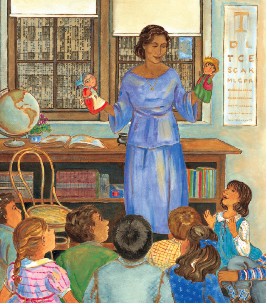

 David Parkins, illustrator of That Cat Can’t Stay (one of 10 books on the
David Parkins, illustrator of That Cat Can’t Stay (one of 10 books on the 







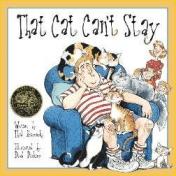









I'm no longer teaching, but I loved using picture books in my middle-school social studies classroom. Like you, I agree they're a concise, fun way to introduce new subjects or to review ideas, eras, people, and places.
I wish I could convince all teachers how important and effective picture books could be in the middle grades. Hope you enjoyed teaching! I'm sure you made a profound impact on some lives.